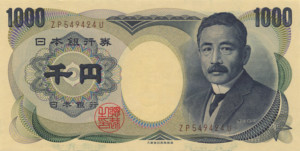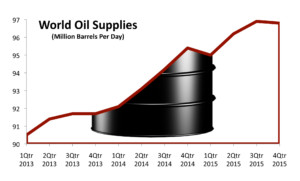Macro Overview – May 2016
The prospect of a delayed tightening by the Fed, a weaker dollar, and a rebound in commodities helped stabilize equities in April. A falling U.S. dollar along with central banks in Europe and Asia trying to stem the rise of the euro and yen, is indicative of a currency war looming in the shadows. A weaker dollar makes U.S. products cheaper and the U.S. more competitive internationally, a concern to both European and Asian exporters.
Commodity related currencies from countries as Australia, Russia, Canada, and Brazil saw rebounds against the dollar in April, elevating assurances that a demand for commodities is still intact. Economists view this as a measure of a global economic revival.
Following years of debate and assistance, the IMF is considering letting its support for Greece go and cease participating in any further Greek bailouts. Such a possible move would force countries with dire fiscal constraints to reassess their financial policies.
The Labor Department reported that jobless claims for unemployment benefits fell to their lowest level since 1973, historically representative of a strong labor market. Employment data also revealed that there is a growing number of part-time workers rather than full-time workers encompassing the labor force. Various research reports have suggested that the implementation of the Affordable Care Act, whose major provisions were phased in by January 2014, encouraged employers to shift workers to more part-time positions in order to avoid having to cover them under the newly mandated health insurance requirements.
Records maintained and released by the IRS have identified a sharp rise in 1099 income filings as of 2014. 1099s are issued for any income generated over $600 during the tax year. Many economists believe that such dynamics is a validation of full-time employee positions being replaced by part-time independent contractors.
A strengthening Japanese yen over the past few weeks has led some analysts to believe that risk aversion may be a cause. A stronger yen and a weaker dollar has historically signaled less confidence in U.S. growth and a heightened attentiveness to global dynamics.
Sources: Labor Dept., IMF, IRS
Fixed Income Update – Global Bond Markets
The ECB disclosed additional details in April about its bond buying program, stating that it will purchase government and corporate debt with maturities of 6 months to 30 years. Effectively, this strategy will provide cheap loans to global corporations operating in Europe, leading to a possible surge in debt issuance as companies take advantage of the ECB’s plan.
So far this year, corporate bonds have outperformed most government bond sectors, including Treasuries and mortgage-backed debt. High-yield corporate debt has seen the most appreciation of all corporate debt. Historically, high-yield bonds tend to correlate with equity markets due to factors as improving earnings and credit ratings. Some analysts believe that the Fed’s stance on keeping rates stable for now and the ECB’s stimulus program in Europe of buying corporate debt has prompted domestic bond values to rise.
Sources: ECB, Bloomberg, Federal Reserve

 Oil exports account for about 75% of the countrys revenue, so when oil was trading at $100 plus a barrel, the country had a surplus. Huge budget surpluses are turning into deficits and generous social programs are being replaced with austerity measures and cuts. S&P downgraded Saudi Arabias debt in October, making it more expensive for the country to borrow money. Last year alone, $4 billion in bonds were sold in order to supplement the countrys shortfall from oils collapse. The IMF released a report in 2015 identifying that Saudi Arabias breakeven price is $105 per barrel, more than twice the level of current prices. Even as the world’s lowest-cost oil producer, Saudi Arabia still relies on higher prices in order to balance its budget. So with 75% of Saudi Arabia’s revenue derived from oil exports, the government has amassed a $100 billion budget deficit in 2015 and announced tough austerity measures for 2016.
Oil exports account for about 75% of the countrys revenue, so when oil was trading at $100 plus a barrel, the country had a surplus. Huge budget surpluses are turning into deficits and generous social programs are being replaced with austerity measures and cuts. S&P downgraded Saudi Arabias debt in October, making it more expensive for the country to borrow money. Last year alone, $4 billion in bonds were sold in order to supplement the countrys shortfall from oils collapse. The IMF released a report in 2015 identifying that Saudi Arabias breakeven price is $105 per barrel, more than twice the level of current prices. Even as the world’s lowest-cost oil producer, Saudi Arabia still relies on higher prices in order to balance its budget. So with 75% of Saudi Arabia’s revenue derived from oil exports, the government has amassed a $100 billion budget deficit in 2015 and announced tough austerity measures for 2016.